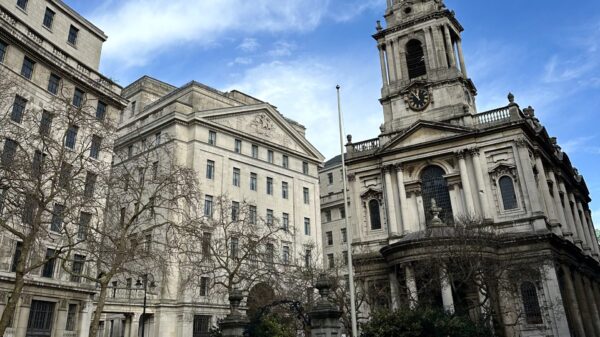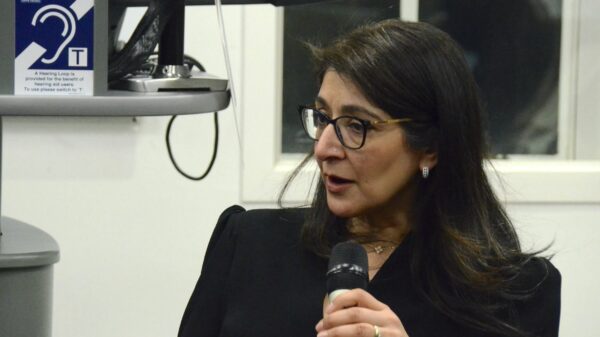Staff writer Filipa Fonseca discusses the latest IPCC Assessment and questions if we are really on track for a sustainable world.
The latest Intergovernmental Panel on Climate Change (IPCC) report on climate change, known as the Sixth Assessment Synthesis Report (AR6) was published earlier this month. Its press release highlights that, despite us facing an unprecedented challenge, it is still possible to keep global temperature rise at 1.5 degrees Celsius, as pledged in the 2016 Paris Agreement. In order to get there, we require “deep, rapid and sustained” reductions to greenhouse gas emissions in all sectors. With global warming currently 1.1 degrees Celsius above pre-industrial levels, the press release stresses that the removal of financial barriers, implementation of policy and international cooperation are key to achieve global warming goals.
What does the report say?
The report does not present any new findings, but stresses that climate action is needed immediately. “Climate change is a threat to human well-being and planetary health. Any further delay in concerted anticipatory global action on adaptation and mitigation will miss a brief and rapidly closing window of opportunity to secure a liveable and sustainable future for all”. It also notes that increasing warming reduces the efficacy and range of adaptation options available to achieve climate action, again underlining the need to curb global warming as fast as possible, as soon as possible.
It reiterates that extreme weather, loss of species and food production, to name just a few issues, will worsen with increasing warming. The vulnerable communities who have historically contributed the least to current climate change will be the most disproportionately affected.
The press release states that nearly half of the world’s population live in regions which are highly vulnerable to climate change, where deaths from extreme weather (floods, droughts, and storms) were 15 times higher than elsewhere. According to the report, “increasing weather and climate extreme events have exposed millions of people to acute food insecurity and reduced water security, with the largest impacts observed in many locations and/or communities in Africa, Asia, Central and South America, LDCs [Least Developed Countries], Small Islands and the Arctic, and for small-scale food producers, low-income households and Indigenous Peoples globally.”
Fiame Naomi Mata’afa, prime minister of Samoa, publicly urged other nations to take action on the eve of the report’s release, pointing out that Pacific communities are already living with the devastating impacts of global warming. “There are already examples in the Pacific of communities, whole communities, that have relocated to different countries”, she noted.
Misleading coverage
Coverage of the report by major news agencies has generally been a mischaracterisation. The press has thrown around fear-mongering phrases like ‘obliteration’, ‘final warning’ and ‘survival guide’. But it’s not the end times quite yet; many scientists and officials stress that the report also offers hope. Limiting temperature rise to 1.5 degrees Celsius is still possible, with the way forward clearly set out in the report.
Despite this, one BBC article claimed that “Governments had previously agreed to act to avoid global temperature rise going above 1.5C. But the world has already warmed by 1.1C and now experts say that it is likely to breach 1.5C in the 2030s”. The authors would do well to remember that governments did not just ‘previously agree’ to the 1.5 degree Celsius target – 194 states are legally bound to uphold it. (That said, the British government’s track record on respecting international law is mixed at best.) Downplaying the responsibility to enforcing environmental legislation is a disservice to citizens all across the world – particularly since governments are fully aware of the devastating impact climate change will have and the IPCC has handed them a series of policy proposals on a silver platter.
It is an utter cop-out to highlight the changes that individuals can make to contribute to lower greenhouse gas emissions, while omitting the fact that there is enough global capital between to make rapid and effective climate action possible, should governments be moved to act accordingly with the climate action legislation they ratified. Despite the report’s overall optimism, the British situation is cause for concern.
Where does the UK currently sit in all of this?
Chancellor of the Exchequer, Jeremy Hunt (a self-proclaimed “green Tory”, hurray), recently announced his plan to invest £20 billion over the next 20 years in nuclear energy and carbon capture projects (as opposed to renewable energy sources), which been described as a “gamble”. It could more simply be described as “baffling”, given that the IPCC AR6 Report suggests that nuclear power and carbon capture technology would contribute the second-least and least respectively to net-emission reduction relative to their price when compared against other energy options.
Carbon capture is also still a largely untested field, meaning that there is little concrete guarantee of how effective it will be compared to other renewable energy sources. In the words of Ami McCarthy, a political campaigner at Greenpeace UK, “this misguided budget shows the stranglehold fossil fuel and nuclear lobbies have on this government. Why else would it take such a dangerous gamble on unproven technologies?” she asked. “Squandering taxpayers’ money on nuclear reactors that don’t even exist yet and fanciful carbon capture is irresponsible, and does nothing to reduce our emissions now.”
Net-zero?
Britain has set a legal target to reach net zero carbon emissions by 2050. Currently, the Climate Action Tracker says that the UK’s climate policies are failing the 1.5 degree Celsius and fair share targets, labelling overall policy as ‘almost sufficient’. By contrast, the UN secretary general, Antonio Guterres, is calling for countries to bring forward their plans for net zero by a decade in response to the new IPCC report. “Leaders of developed countries must commit to reaching net zero as close as possible to 2040, the limit they should all aim to respect,” he said in a statement.
This week, the UK government is planning to launch a ‘revamped’ net zero strategy in Aberdeen. In anticipation, hundreds of scientists and academics have called on Prime Minister Rishi Sunak to stop the continued licensing of oil and gas development in the UK, warning that “we already have more than enough coal, oil and gas to overshoot what is deemed our best hope of maintaining a livable climate” and that “ there is now overwhelming evidence that the UK is far better served by a rapid transition to domestic clean energy sources, particularly renewables, and decarbonisation of our economy. Doubling down on fossil fuels will not lower energy bills or enhance our energy security.”
Despite this, a Department for Energy Security and Net Zero spokesperson responded, “delivering energy security and net zero at lowest cost means investing in home grown energy such as offshore wind. But in all scenarios the UK will continue to use oil and gas as we meet our 2050 net zero goal, and even the Committee on Climate Change agrees there may be emissions advantages to domestic UK production replacing imports.”
In terms of tangible damages caused by rising temperatures, the Guardian reported last week that nearly a fifth of UK hospitals had to cancel operations for three days during the July 2022 heatwave, with a further third stating that if the heatwave had gone on for longer (a near-guarantee in the next few decades), they would have had to cancel surgeries. This research was published as a letter in the British Journal of Surgery, with findings stating the NHS buildings were not set up to withstand dangerously high temperatures. 41% of operating theatres have no means to control ambient temperature.
James Glasbey, co-author of the letter, and National Institute for Health and Care Research doctoral research fellow at the University of Birmingham said that “even short heatwaves may result in widespread disruption to surgical services in the UK… The likelihood of extreme weather events is growing – we could find ourselves in both a ‘winter’ and ‘summer’ stress situation within the next few years.”
Right now it seems that the UK is a far cry away from its reputation as a “world-leader in achieving net zero”, at the expense of its citizens’ health. But looking beyond the UK, it seems that many other world leaders are carrying on business as usual too, falling far short on their ‘agreements’.
How short are governments falling?
In a word, very.
Before the COP26 UN climate summit in Glasgow back in 2021, attending countries were meant to have submitted plans that would almost halve global carbon output by 2030, to stick to the 1.5 degree Celsius target. Although most countries submitted plans, they were not strong enough and analysis found they would lead to a disastrous 2.4 degree Celsius warming.
A year later, just before the COP27, the UN found that the plans submitted by governments would lead to a temperature rise of between 2.1 and 2.9 degrees Celsius, with the best estimate at about 2.5 degrees. In the words of Simon Stiell, the executive secretary of the UN framework convention on climate change, this represents a “marginal” improvement on the 2.7 degree temperature rise that would have followed from the commitments made at Glasgow. Over 600 oil and gas lobbyists were present at COP27, marking a rise of more than 25% from COP26, where they outnumbered any national delegation.
One might think this might not be conducive to the task at hand. One might even think that choosing the CEO of the United Arab Emirates’ (UAE’s) national oil company, the world’s twelfth largest oil company by production as the COP28 President-Designate is a bit silly. Despite this seeming conflict of interests, Dr Sultan Al Jaber is also Minister of Industry and Advanced Technology, and founding CEO and Chairman of Masdar, Abu Dhabi’s leading renewable initiative.
Ahead of the COP27, he pointed out the UAE’s success in implementing renewable energy strategies. “Today, the UAE is also home to three of the largest and lowest-cost solar plants in the world, and we are the first country in the region to build a large-scale carbon capture, utilisation and storage facility.” He also recognised the necessity of policy and collaboration with private sectors in climate action, painting a hopeful picture of the COP28, with a ‘leave no one behind’ approach to inclusive climate action.
However, he also insisted that “even in a net zero emissions world, energy security requires that oil and gas be part of the mix”, a statement somewhat at odds with his more recent declaration that the Paris Agreement goal of 1.5 degree Celsius is “non-negotiable”. Despite the clear will to invest in cutting emissions, the UAE’s reliance on its oil economy makes its commitment to the COP28’s goals not entirely convincing.
‘Leave no one behind’ is also starting to ring a bit hollow for more vulnerable nations. In response to the IPCC AR6, the chair of the Alliance of Small Island States, Fatumanava-o-Upolu III Dr. Pa’olelei Luteru, said that “while our people are being displaced from their homes and climate commitments go unmet, the fossil fuel industry is enjoying billions in profits. There can be no excuses for this continued lack of action.”
Currently, according to the Climate Action Tracker’s rating system, no states that ratified the Paris Agreement are actually on track to achieve the 1.5 degree target in terms of aviation and shipping emissions. However, a lot has been achieved since the IPCC’s formation, and there is reason to believe that we can still get through this “rapidly closing window of opportunity”. Environmental policy success stories like the Montreal Protocol are a testament to this.
The Montreal Protocol
The 1989 Montreal Protocol is the only universally-ratified piece of environmental legislation to date, and was created in response to ozone depletion. Ozone depletion refers to the thinning of the ozone layer, a protective layer of stratospheric ozone that protects the planet from deadly ultraviolet (UV) radiation.
In 1974, scientists Mario Molina and F. Sherwood Rowland published a paper theorising that chlorofluorocarbons (CFCs) caused ozone depletion, however their paper was dismissed by the industry. This was later overshadowed by the British Antarctic Survey’s 1985 report that confirmed that there was a hole in the ozone layer and suggested a link to CFCs.
Thanks to thorough investment in scientific research and coordinated international political action, the Montreal Protocol was created in 1987 and signed in 1989, with the goal of phasing out ozone-depleting substances (ODS). It operated with “common but differentiated responsibilities” between developed countries that were financially and technically capable to effect changes in consumption and production of ODS. Developing countries who required access to funding had this provided through a multilateral fund in order to achieve the treaty’s goals.
Private manufacturers also played a significant role in stopping CFC emissions. DuPont, the leading CFC manufacturer at the time, called for the complete phase-out of CFCs and committed fully to this, closing their last production facility in 1999. Several other major companies, such as Daikin and Coca-Cola, followed suit. Political action was also key to the Protocol’s implementation.
Currently the ozone layer is set to recover by the middle of the twenty-first century, with the implementation of the Montreal Protocol resulting in the prevention of millions of additional cases of melanoma, other cancers and eye cataracts. By 2030, it is estimated to save two million people each year from skin cancer. Additionally, in 2010, emission reductions due to the Montreal Protocol were between 9.7 to 12.5 gigatons of CO2, approximately five to six times more than the target of the Kyoto Protocol, an international treaty adopted in 1997 with the express goal of reducing greenhouse gas emissions.
There is still more work to be done. Cost-effective alternatives to the limited ODS still produced for essential applications need to be found, and these environmentally friendly alternatives need to be implemented. But all-in-all, the Montreal Protocol is proof that global environmental policies can and do work. David Doniger, Senior Strategic Director on the Climate and Clean Energy Program, says that “the Montreal Protocol stands out as proof positive that the Earth’s nearly 200 countries can effectively cooperate to protect their citizens from a planetary pollution crisis—address climate change as well as ozone depletion. We saved the ozone layer. We can save the climate.”
What now?
It remains to be seen whether governments will finally pick up the pace of climate action and heed the IPCC report’s warnings. COP28 looks to be instrumental in putting the Paris Agreement targets back on track. Although current climate commitments are not enough, there is still reason to believe that they can and will make the necessary changes to ensure a sustainable future for all. As Dr Bronson Griscom, vice-president of Natural Climate Solutions at Conservation International, puts it, “even the highway to hell has exit ramps”.













